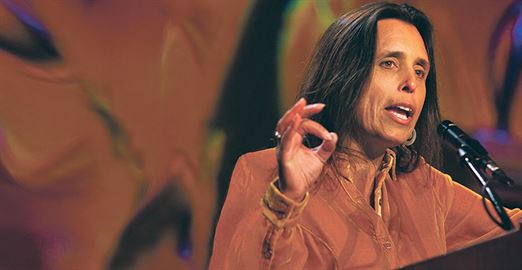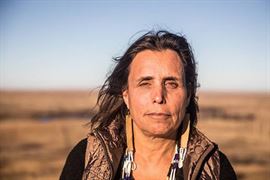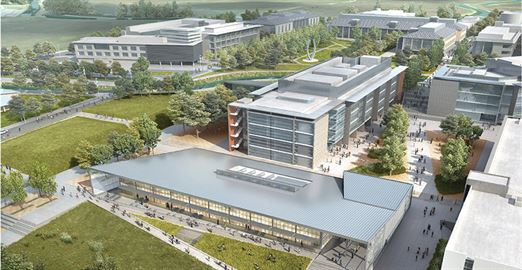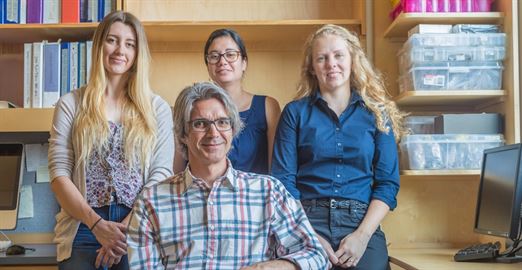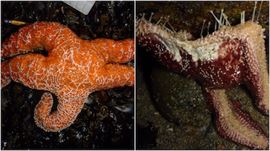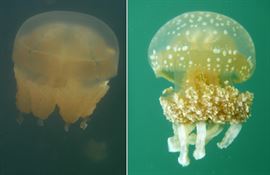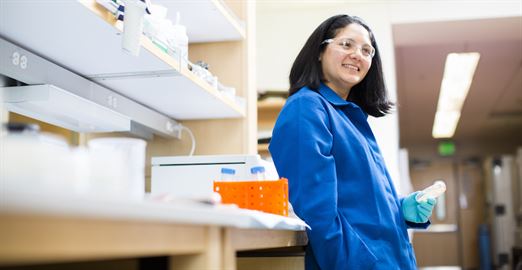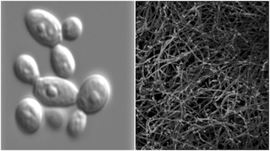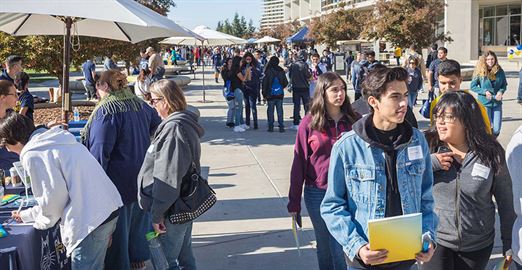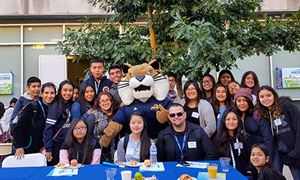 Student leaders, advisors, campus organizations and athletes were recognized at the annual the Margo F. Souza Student Leadership Center 2017 Leadership Awards celebration on April 23.
Student leaders, advisors, campus organizations and athletes were recognized at the annual the Margo F. Souza Student Leadership Center 2017 Leadership Awards celebration on April 23.
A campuswide selection committee chose the winners for their outstanding performance in a variety of student activities and scholarship.
“While today we recognize individuals or individual student organizations, I believe that leadership isn’t about the power of one,” Vice Chancellor for Student Affairs Charles Nies said. “It’s the collective actions of many who come together and create a powerful course for positive change.”
This year’s winners include:
- Outstanding Advisor Award: Ala Qattawi
- Inspirational Bobcat Award: Jacob Feitelberg
- Outstanding Graduate Student Award: Maryam Trebeau Crogman
- Outstanding New Student Organization: UC Sprouts
- Cobi Jones Sport Club Male Athlete of the Year Award: Avery Knizek
- Sport Clubs Female Athlete of the Year Award: Jasmine Yslas
- Male Intercollegiate Athlete of the Year: Andy Galvan
- Georgette Ma Kelley Female Intercollegiate Athlete of the Year: Desiree Coles
- Organization President of the Year: Cristhian Gutierrez Huerta
- Social Justice Leadership Award: Violet Barton
- Fraternity and Sorority Council Chapter of the Year: Kappa Sigma
- Professional Fraternity Council Chapter of the Year: Phi Delta Epsilon
- Outstanding New Member of the Year: Morelia Marines
- Outstanding Member of the Year: Mahrukh Mujeeb
- University Friends Circle Community Service Organization: Society of Women Engineers
- Margo F. Souza Entrepreneur in Training Team Scholarship: Vibronerv
- Margo F. Souza San Joaquin Valley Mentor of the Year Award: Justin Yeager
- Distinguished Leader Award: Victoria Arias, Clara Medina Maya, Ariell Smith and Brenda Yu
- Program of the Year “Splash Conference” by Generation to Generation
- Student Organization of the Year: Lambda Alliance
- Contribution to Student Affairs Award: Christopher Michael Bernal, Andre Frise-Valdez, Mercy Maina
- Legacy Award: Joseph Andrade
 The final award of the afternoon, the Carol Tomlinson-Keasey Award, was presented to history major Havilliah “Jake” Malsbury. The award recognizes the “most outstanding graduating student” chosen from the nominees of the Legacy Award.
The final award of the afternoon, the Carol Tomlinson-Keasey Award, was presented to history major Havilliah “Jake” Malsbury. The award recognizes the “most outstanding graduating student” chosen from the nominees of the Legacy Award.
“Jake has a passion for service and desire for justice for all people and all communities,” Nies said. “This passion fuels his willingness to go above and beyond to support others as they engage, participate and learn.”
During his time at UC Merced, Malsbury distinguished himself among other student leaders and embodied the spirit of the campus’s first chancellor Carol Tomlinson-Keasey. Some of his accomplishments include serving as a mentor for “Lift While You Lead” community service initiative, editor-in-chief of the undergraduate historical journal and as a member of the Native-American Tribe Conservation Project.
“It is my hope that I have left a lasting impact on UC Merced,” Malsbury said. “One that will inspire students to make the most of their time as students.
“As well as inspiring students to serve their communities and to create a cycle of mentorship that will continue to empower students at UC Merced, the Merced community and beyond.”
Get more information about the criteria for individual leadership awards online.
 UC Merced’s Classroom and Office Building (COB) has achieved a silver rating from the LEED Building Operations and Maintenance (O+M) sustainability program, the campus’s first certification to come from the
UC Merced’s Classroom and Office Building (COB) has achieved a silver rating from the LEED Building Operations and Maintenance (O+M) sustainability program, the campus’s first certification to come from the  Mechanical engineering major Andrew De Los Santos was the project manager for the class’s opening semester and is credited for developing a two-page document for each credit on the LEED O+M certification scorecard. He spent time setting up the systems that are still in place and gained exposure to sustainable building and operations that led to him earning LEED Green Associate accreditation in January 2017.
Mechanical engineering major Andrew De Los Santos was the project manager for the class’s opening semester and is credited for developing a two-page document for each credit on the LEED O+M certification scorecard. He spent time setting up the systems that are still in place and gained exposure to sustainable building and operations that led to him earning LEED Green Associate accreditation in January 2017. The Leo and Dottie Kolligian Library was the first campus building to receive the operations and maintenance certification, which was submitted by Facilities Management and earned a gold certification in 2015.
The Leo and Dottie Kolligian Library was the first campus building to receive the operations and maintenance certification, which was submitted by Facilities Management and earned a gold certification in 2015. Jocelyne Fadiga and Havilliah “Jake” Malsbury traveled from different worlds to study at UC Merced.
Jocelyne Fadiga and Havilliah “Jake” Malsbury traveled from different worlds to study at UC Merced. Engineers to the Merced County Project 10%, which aims to improve local high school graduation rates, and often served in leadership roles.
Engineers to the Merced County Project 10%, which aims to improve local high school graduation rates, and often served in leadership roles. Mark T. Harris, J.D., has been appointed to the California Fair Employment and Housing Council by Gov. Jerry Brown.
Mark T. Harris, J.D., has been appointed to the California Fair Employment and Housing Council by Gov. Jerry Brown. UC Merced Professor
UC Merced Professor  Chris Fradkin, professor e ex-aluno da Universidade da Califórnia em Merced, está indo para o Brasil em busca de “ciência perdida.”
Chris Fradkin, professor e ex-aluno da Universidade da Califórnia em Merced, está indo para o Brasil em busca de “ciência perdida.” The Strauss Foundation selected biological sciences major Pranuthi Kanneganti and public health major Akhila Yechuri as recipients of this year’s awards.
The Strauss Foundation selected biological sciences major Pranuthi Kanneganti and public health major Akhila Yechuri as recipients of this year’s awards. UC Merced Professor
UC Merced Professor  UC Merced recently joined the ranks of six other UCs and 70 other universities around the country when it was selected as the newest site for the
UC Merced recently joined the ranks of six other UCs and 70 other universities around the country when it was selected as the newest site for the 